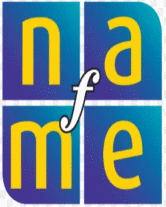Introduce students to a call-and-response form of Native American song and dance.
Objectives
- Students will identify and describe a call-and-response form as used in "0 Hal'Lwe."
- Students will identify the use of the pentatonic scale in "0 Hal'Lwe."
- Male students will perform "0 Hal'Lwe" in call-and-response style with drum accompaniment (one note per beat).
- Female students will perform the dance, changing dance movements as cued aurally (in call-and-response sections).
Materials
- Song "0 Hal'Lwe"
- Drums (Native American or classroom hand drums)
- Map of the United States with Nanticoke lands (southern Delaware) clearly marked
Procedures
- Provide a brief historical and cultural background of the Nanticoke people and locate southern Delaware on the map of the United States.
The historical information you tell students might include the following: The Nanticoke people hail from the Eastern Woodlands. As early as the 1580s, English and Spanish explorers encountered the Nanticoke living along the Nanticoke River in the Chesapeake Bay region of present-day Delaware and Maryland. Following several failed treaties, most Nanticoke left their homes and moved to Pennsylvania and New York, where they were placed under the protection of the Cayuga Nation. A few families, however, remained on traditional lands, enduring prejudice as "free colored" through the 19th and early 20th centuries. In recent years, the Nanticoke have reasserted their cultural identity and have actively promoted their ancient heritage by hosting powwows, establishing a tribal museum, and obtaining state recognition as Native Peoples. On the weekend following Labor Day each year, the Nanticoke host one of the largest powwows in the eastern United States as a celebration of their cultural pride.
The cultural information you tell students might include the following: The important role played by women in the Nanticoke culture contrasts sharply with the male-dominated society of early European settlers. As with numerous other Native Peoples, the women traditionally managed the affairs of the tribe, owned the property, and were honored as the true preservers of the tribe's cultural heritage. This women's dance is to honor the women of the Nanticoke as the force that both preserves and protects tribal culture. Although the specific meaning of the words to this song has been lost, the Nanticoke remember that "0 Hal'Lwe" refers to the mighty oak tree and compares the role of women in their culture to the oak tree that brings forth new life (acorns) and provides shelter and protection as each new generation grows to maturity, thereby guaranteeing the survival of the people and their culture. While the men accompany the dance with singing and drumming, women often many generations of women from the same family dance together as a demonstration of multigenerational bonding. - Introduce "0 Hal'Lwe."
- Teach the song, identifying call-and-response sections. Solo male begins the song; the refrain is sung by all males. Assign a few students to play drum accompaniment using one note per beat.
- Teach the dance as follows:
- Females form a large circle. The circle will move in a counterclockwise direction.
- During the call section, each female student moves forward (starting withthe left foot), tapping her toe on the downbeat of each pulse and pattingthe ground with her flattened foot on the upbeat of each pulse, like this:
tap pat tap pat etc. 1 + 2 +
- During the response section, each student rotates clockwise (in individual circles) using the tap-pat pattern of motion, resuming the forward counterclockwise movement when the call section is repeated.
- Perform "0 Hal'Lwe."
- Following several performances, review the Nanticoke historical and cultural background, call-and-response form, and use of aural cues to change dance movements.
Standards Correlations
Standard 2
: Performing on instruments, alone and with others, a varied repertoire of musicStandard 6
: Listening to, analyzing, and describing musicStandard 7
: Evaluating music and music performances
Excerpted fromMulticultural Perspectives in Music Education.

| Provided in partnership with NAfME |
Introduce students to a call-and-response form of Native American song and dance.
Subjects
TYPE:




